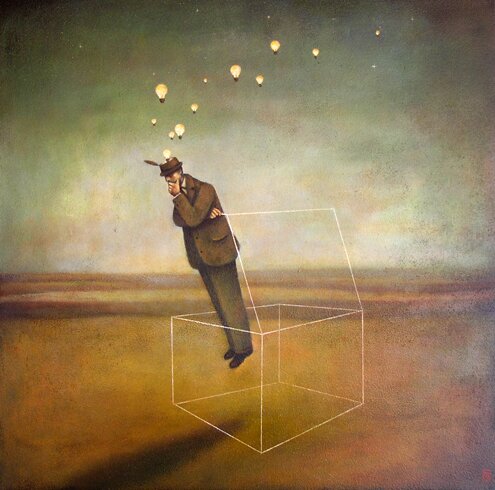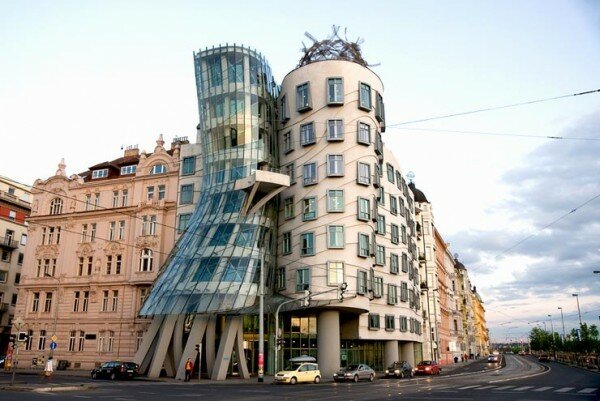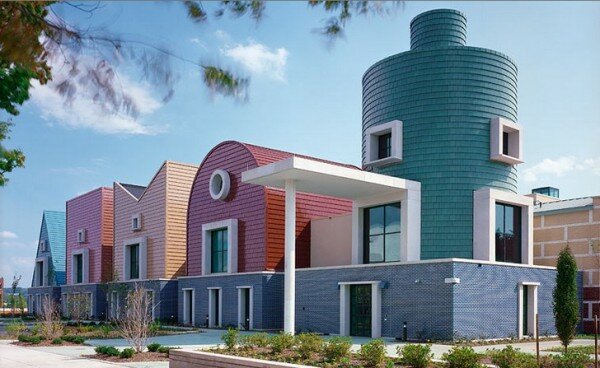The other day I was thinking about the Modernist Movement(obviously) which drifted into thoughts of Postmodernism ..and realized I really didn’t understand what makes something “Postmodern”.
(The work of Duy Huynh)
When did Modernism end? Modern art is still being created, so is that Modern or Postmodern? Aren’t all new creations and styles considered modern works for that time period, so how can something ever be ‘post’?
Was there a definitive piece/year assigned/did an artist die to put a line in the sand between what is Modern and Postmodern?
Is there even a line or did one movement bleed into another?
HYPHEN OR NO HYPHEN?
We sometimes assign these vague academic terms to describe things without really stopping to say “wait..what?”
———————————————-
So I decided to do a bit of research, and was able to find some most-likely inaccurate information from our avatar friends on Yahoo answers.
Worst.
Apparently there is no one “right” answer regarding the origins of Postmodernism which dashes my thoughts of some BigBangesque D-Day where the world was forever changed and everything that followed was considered “post”.
M. —  — P.M.
— P.M.
It is a peculiar academic term that can be interpreted several ways depending on who you ask.
Sometimes post-modernism is lumped into discussions regarding “deconstruction”, post-structuralism, the post-industrial, post-human, or even post-post modernism.
But don’t worry about that.
———————————-
What is Postmodernist Thought?
(The work of Charles Jencks)
“Postmodernism is a movement away from the viewpoint of modernism. More specifically it is a tendency in contemporary culture characterized by the problem of objective truth and inherent suspicion towards global cultural narrative or meta-narrative. It involves the belief that many, if not all, apparent realities are only social constructs, as they are subject to change inherent to time and place. It emphasizes the role of language, power relations, and motivations; in particular it attacks the use of sharp classifications such as male versus female, straight versus gay, white versus black, and imperial versus colonial. Rather, it holds realities to be plural and relative, and dependent on who the interested parties are and what their interests consist in. It attempts to problematise modernist overconfidence, by drawing into sharp contrast the difference between how confident speakers are of their positions versus how confident they need to be to serve their supposed purposes. Postmodernism has influenced many cultural fields, including literary criticism, sociology, linguistics, architecture, visual arts, and music.”
——————————-
What is the Postmodernist Art Movement?
(Dancing House, Frank Gehry)
Anecdote #1: The movement of Postmodernism began with architecture, as a response to the perceived blandness, hostility, and Utopianism of the Modern movement.Modern Architecture, as established and developed by people such as Walter Gropius, Le Corbusier, and Philip Johnson, was focused on the pursuit of a perceived ideal perfection, and attempted harmony of form and function, and dismissal of “frivolous ornament.”
Critics of modernism argued that the attributes of perfection and minimalism themselves were subjective, and pointed out anachronisms in modern thought and questioned the benefits of its philosophy. Definitive postmodern architecture such as the work of Michael Graves rejects the notion of a ‘pure’ form or ‘perfect’ architectonic detail, instead conspicuously drawing from all methods, materials, forms and colors available to architects.
Postmodernist architecture was one of the first aesthetic movements to openly challenge Modernism as antiquated and “totalitarian”, favoring personal preferences and variety over objective, ultimate truths or principles. It is this atmosphere of criticism, skepticism, and emphasis on difference over and against unity that distinguishes many postmodernisms. (via Wikipedia)
———-
Anecdote #2:“A modernist work of art is by definition ‘incomprehensible’; it functions as a shock, as the irruption of a trauma which undermines the complacency of our daily routine and resists being integrated into the symbolic universe of the prevailing ideology.
What postmodernism does, however, is the very opposite: its products [have mass appeal] – It is for the interpreter to detect in them an exemplification of the most esoteric theoretical finesses of Lacan, Derrida, or Foucalt.
This is me again: So, I see philosophy working in a similar way to art here. Modernism takes the strange and makes it more easily accessible. Postmodernism takes the everyday and extracts the abstract from it.”–Slavoj Zizek
———-
Anecdote #3:“To some it’s an excuse to pile together oodles of wild and crazy decor, to others it’s another example of the weakness of standards and values, to others a transgressive resistance to the sureness of catagories, to others a handy way to describe a particular house, dress, car, artist, dessert, or pet and to others, it’s simply already over”- Barbara Kruger
———————————————-
Characteristics
(The work of Barbara Kruger)
- A turning away from the modernist obsession with abstraction
- Reactionary & Nostalgic
- Progressive
- Schizophrenic
- Indeterminancy
- Discontinuity
- Pastiche
- Contextual
- Social & Technological Realism
- Escapism
- Pluralism
- Overproduction of artifacts & inflation of theory
(via Jon Mattox)
———————————————-
What Types of Art are Considered “Postmodern”?
- Pop Art
- Hyperrealism
- Photorealism
- Allegorical & Political Realism
- New Image Painting
- La Transavanguardia (promoted at the time by Italian critic Bonito Oliva)
- Neo Expressionism
(via Jon Mattox)
———————————————-
Examples of Postmodernist Artists
Barbara Kruger
(You Are Not Yourself)
Peter Halley
Charles Jencks
Michael Graves
Marcel Duchamp
(Fountain)
“Fountain is simply a common human waste receptacle. To a modernist, the receptacle is merely a functional, scientific instrument to dispose waste. Taking an object that is generally considered filthy and worthless, Duchamp converted it into an expensive art piece. He instilled value to an object most would consider valueless. Duchamp wanted to prove a point: by fabricating art and getting society to regard it as meaningful, we can increase its worth and value. This encapsulates the significant difference between a postmodernist and modernist society. While modernists place a greater value on the intrinsic, postmodernists place a greater value on the extrinsic. With his art piece, Duchamp showed that in a postmodern world, truth is no longer dependent on its intrinsic value (a common, filthy receptacle); it depends extrinsically on how society defines it (an expensive piece of fine art).”-Kong Hee
———————————————-
Some of the above artists can fit into a few different movements, but hopefully you get the jist about Postmodernism..
..Post-modernism..
P.Mod. ♥














